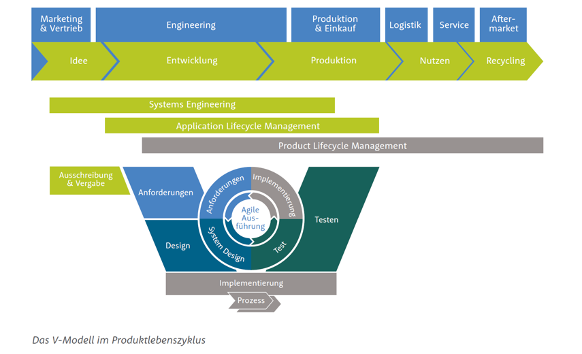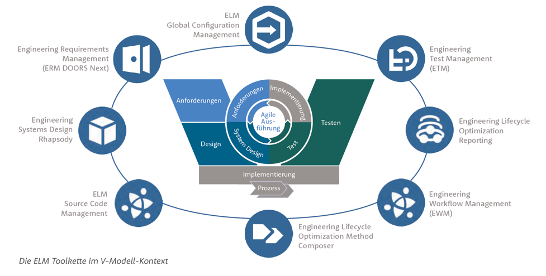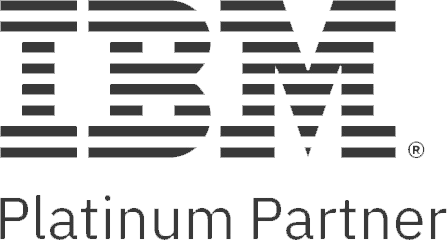Engineering Lifecycle Management
The method
Systems engineering
Systems engineering offers a way to develop and implement complex technical systems in large-scale projects. It concentrates on defining and documenting system requirements in the early development phase, creating a system architecture and testing that the system meets the demands. The tight coupling to the development process is decisive to ensuring that the disciplines involved (software, hardware and mechanics) synchronize well. Traceability, change management and configuration management enable transparency across all development phases all the way to approval. Simplified diagram in the graphic on the right: system development using the V-model.

The product
IBM Engineering Lifecycle Management (ELM)
Companies can only gain a competitive advantage within their market segment if they can realize smooth and efficient processes in product development. The interactive process guidance of the IBM Engineering Lifecycle Management tool suite supports all groups of people involved, guiding them through the entire development process.

The key benefits at a glance
- Platform-based collaboration enables leaner communication
- Comprehensive overview despite increasing hardware and software complexity
- Agile working methods (project planning and execution)
- Templates for standards (V-model XT, ASPICE, ISO 26262 etc.)
- Consistent and bidirectional transparency (compliance & traceability)
- Automation of tasks and deployment
- Reporting of all data and associated traceability links
- Review and approval functions
- Modular recycling of all engineering data
- Reduced documentation workload for compliance evidence
The tool suite
The IBM ELM tool suite covers all disciplines in systems engineering, from requirements and architecture management, through test management and the administration of source code, all the way up to configuration and release management. Features like planning milestones and tasks, change requests and problem reports aid task execution and support fast information transfers. Developers are guided interactively through the development process thanks to the interactive process guide.

Turnkey solution templates and the SVA solution framework accelerate the implementation of existing processes and tools in line with your business requirements.
Automotive SPICE & medical
In complex, safety-critical products, development processes play a key role. Automotive SPICE defines and assesses the maturity of these processes. When implementing the processes, i.e., “the development,” it is important to guarantee traceability, from the requirements through the implementation all the way to testing. Processes like project, configuration and change management must also ensure full decision transparency. The development of medical products is subject to comparable rules or even stricter compliance requirements (e.g., digital signatures). Risk management also plays a greater role, as risks are understood as product requirements.
Features:
- Process definition with mapping of Automotive SPICE requirements
- Tool implementation templates tailored to the process (data model, workflows, etc.)
- Detailed descriptions of the tool workflows (quick introduction for users)
- Clear documentation of the data & traceability model
- Combination of conventional planning (milestones, phases) and agile approaches (sprints, kanban)
Exchanging and migrating requirements with the ReqIF Transformation Assistant (RTA)
When the list of requirements runs into the thousands, the process of exchanging these between customers and suppliers can become highly complex and vulnerable to errors. The ReqIF format was developed to simplify this process. But many tools often have their own specific requirements. Users sometimes also wish to replicate a certain target format. Based on the ReqIF standard, SVA offers RTA, a universal tool for simplifying the transformation of ReqIF data. The tool can also be used to migrate data from an old system to a new one.
Features:
- Flexible and tool neutral (DOORS Next, codebeamer, PTC Integrity)
- Modular transformation commands
- Supports migration or pre- and post-processing during ReqIF exchange
Any Questions?
If you would like to know more about this subject, I am happy to assist you.
Contact us

